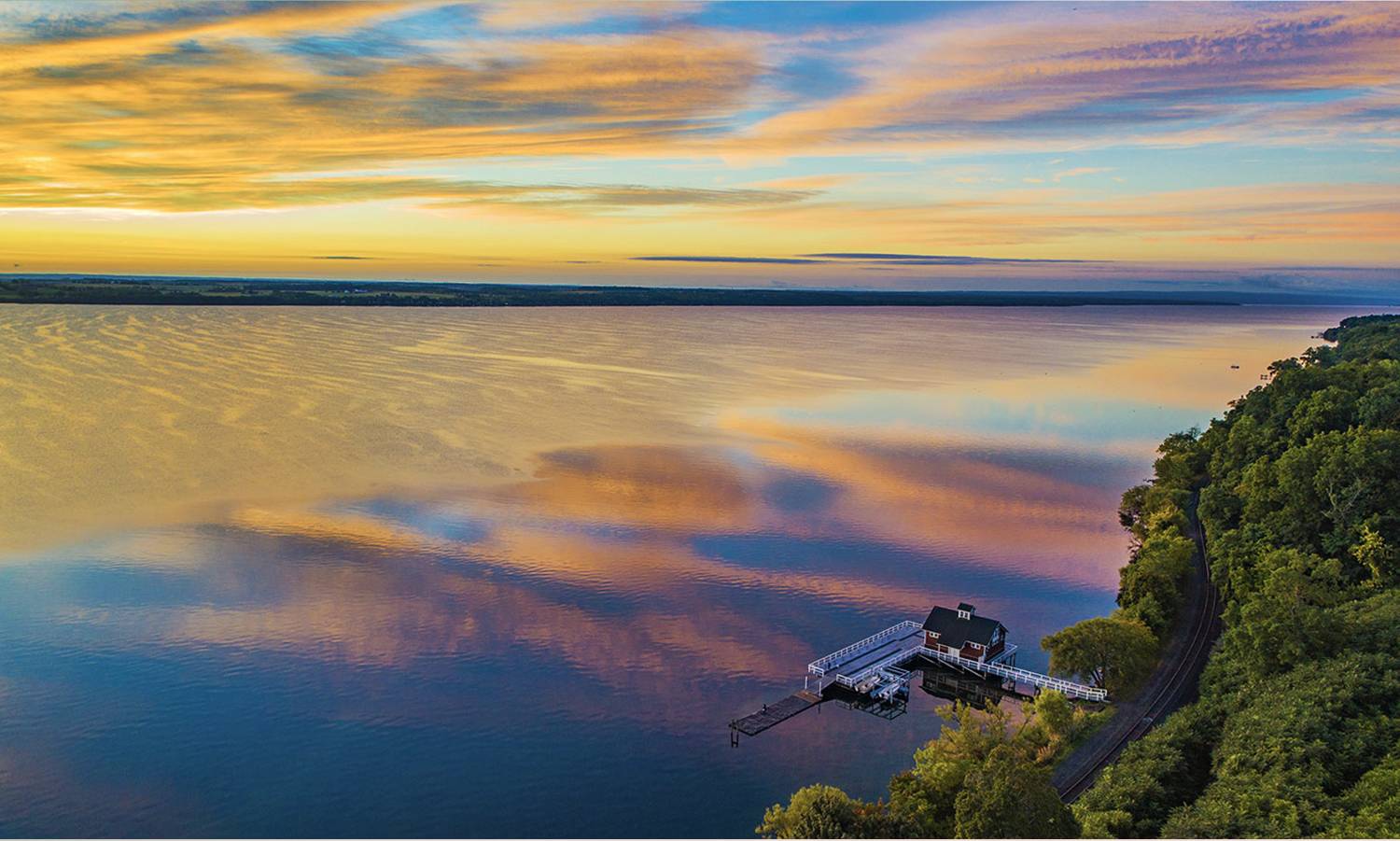
Neil Laird

Neil F LairdProfessor of Geoscience
Joined faculty in 2001
Ph.D., University of Illinois at Urbana-Champaign
M.S., University of Illinois at Urbana-Champaign
B.S., State University of New York at Oswego (magna cum laude)
Contact Information
Scholarly Interest
Neil, a full professor of atmospheric science in the Department of Geoscience at Hobart and William Smith Colleges (HWS), received a Ph.D. and M.S. in atmospheric sciences from the University of Illinois at Urbana-Champaign. He completed a B.S. in meteorology from the State University of New York at Oswego. Before joining the faculty at HWS in 2004, he taught for two years at the University of Illinois at Urbana-Champaign and was a research scientist at the Illinois State Water Survey for nine years where he worked on a variety of research projects ranging from mesoscale modeling to collecting field measurements with aircraft, sounding, and radar systems.
Research
Neil has maintained an active research program involving undergraduate students with funding from the National Science Foundation (NSF) and the National Oceanic and Atmospheric Administration (NOAA) for projects that are collaborative with several research scientists and National Weather Service Forecast Offices around the United States. Neil has supervised nearly 80 undergraduate students during the HWS summer research program. In 2018, he received a Research Experiences for Undergraduates (REU) site grant to establish the Northeast Partnership for Atmospheric and Related Sciences (NEPARS) REU site - a collaborative effort between faculty at HWS in the Department of Geoscience and faculty at Plymouth State University in the Meteorology Program. More information on the program can be found at http://www.hws.edu/NEPARS-REU
Courses Taught
GEO 182 – Introduction to Meteorology: The influence of weather and climate affect our daily activities, our leisure hours, transportation, commerce, agriculture, and nearly every aspect of our lives. In this course many of the fundamental physical processes important to the climate system and responsible for the characteristics and development of weather systems will be introduced. We will examine the structure of the atmosphere, parameters that control climate, the jet stream, large-scale pressure systems, as well as an array of severe weather phenomena including hurricanes, tornadoes, thunderstorms and blizzards. Upon completion of this course, we will have developed: (a) a foundation of basic scientific inquiry (b) a basic comprehension of the physical processes that govern weather and climate, and (c) an understanding of the elements of weather and climate that are most important to society.
ATMO 245 - Climate Change Science: Climate change is one of the greatest challenges of our society What changes have the Earth's atmosphere undergone in the past? What changes are currently happening? What climate changes are likely to occur in the future? This course will explore these questions by establishing a foundation in climate science and examining the scientific evidence underlying climate change and global warming using lecture, discussion, data analysis, and climate modeling. The course will also compare past natural fluctuations in the Earth's climate to our current situation, discuss how scientists study climate using data and climate models, and examine the current thinking on future climate changes.
GEO 255 – Global Climates and Oceans: The Earth has a large variation of climate regimes that are controlled by both landscape and atmospheric factors. The climate of a particular region is defined by annual and seasonal variations of temperature, precipitation, and winds. Regional climate is also greatly influenced by the spatial distribution of land masses and oceans, as well as ocean water characteristics and ocean circulation. This course examines the physical characteristics, processes, and mechanisms of both the atmosphere and oceans that regulate the Earth's climate system and the patterns of its variation across both space and time. In this course, students will use discussion and analysis of climate datasets collected from a variety of measurement systems to develop a comprehensive understanding of global variations of the Earth's atmosphere and oceans, regional climates (Tropic, Mid-latitude, and Polar regions), and climate teleconnections, such as ENSO.
ATMO / GEO 260 - Weather Analysis: Few things capture the public's attention and influence daily decisions like weather. In this course, we will examine day-to-day weather patterns with an emphasis on understanding the basics of meterological processes and forecasting, independent analysis of weather events and mastery of hands-on data analysis. We will examine and discuss conceptual models of the structure of mid-latitude cyclones and convective weather systems, including the processes of cyclogenesis and frontogenesis. Interpretation of atmospheric kinematic and dynamic processes on weather charts is emphasized along with an introduction to weather predication.
GEO 265 - Weather Measurements & Computing: New atmospheric observation systems are being introduced frequently with the accelerated development of technology in today's world. This course will describe methods and instrumentation used to collect direct and remotely sensed observations of the atmosphere. Atmospheric remote sensing of clouds, precipitation, and air motion by weather radars and satellites will be examined through observation and data interpretation. The later portion of this course will explore scientific computing - important to working in most areas of science, especially meteorology. Students will be introduced to the basic concepts of programming and computation using Python and develop skills necessary for the reading, analyzing, and plotting of meteorological and climatic data.
GEO 299 – Geoscience Field Studies: The course is designed to introduce you to field-based scientific investigations in an intensive 2-week course. We will forecast and observe severe weather, specifically severe thunderstorms that are possible of producing tornadoes. Students will perform daily forecasts, storm chase planning, field chase decisions, and collect observations using instrumentation. Students completing the course receive one full course credit. The course is offered as credit/no credit and can be counted toward a Geoscience major or minor.
GEO 360 - Applied Climatology: Climatology is the study of the modern variations in climate and the parameters important for this variability. Understanding the modern climate is critically linked to all areas of Geoscience and provides an important bridge between the study of weather (Meteorology) and past climates (Paleoclimatology).This course examines the physical characteristics, processes and controlling mechanisms of Earth's climate system and the patterns of its change across both space and time. Fundamentals of Earth's atmosphere will be covered with a focus on global climate, and regional climates. Students will develop and strengthen analytical skills through building or enhancing a foundation in statistics; analyze and interpret climate data; and examine the relationship of climatic conditions to physical, biological, and human environments.
GEO 362 – Polar Meteorology: Polar regions are important areas in understanding and monitoring changes in the Earth's atmospheric environment and have some unique weather systems, as well as climate characteristics. Perhaps surprisingly to many, the polar atmosphere is governed by the same physical principles that operate in middle latitude and tropical regions. This course will use the context of the Arctic and Antarctic to introduce and discuss the thermodynamic, radiative, and precipitation processes in the atmosphere. Additional topics that will be discussed include Polar lows, interactions between the atmosphere, cryosphere, and ocean, and stratospheric ozone. Related to many of these topics, we will use current, relevant data sets and collect our own measurements in a local winter environment to compare to observations from Polar regions.
GEO 365 – Environmental Meteorology: The atmospheric boundary layer can be viewed as the most important layer of the atmosphere since it directly impacts humans, animals, plants and the Earth's surface. Additionally, it is within this portion of the atmosphere where pollutants are typically introduced to the air and directly influence air quality through their transport and dispersion. In this course, we will examine the relationships and controls on the transfer of properties (mass, energy, and moisture) between the Earth's surface and the overlying atmosphere, and within the atmospheric boundary layer itself. We will examine the sources, sinks, and transport of atmospheric pollutants under a variety of atmospheric conditions. To achieve these goals, we will use current, relevant data sets and conduct analyses to examine properties of the atmospheric boundary layer and pollutant transport.
Publications
A selection of journal publications that include undergraduate interns* as co-authors:
*Lang, C.E., *McDonald, J.M., *Gaudet, L., *Doeblin, D., *Jones, E.A. and Laird, N.F., 2018. The Influence of a Lake-to-Lake Connection from Lake Huron on the Lake-Effect Snowfall in the Vicinity of Lake Ontario. J. Appl. Meteor. Climatol., 57, 1423-1439.
*Williams, A. and N. F. Laird, 2018: Weather and eared grebe winter migration near the Great Salt Lake, Utah. Int. J. Biometeorology, 62, 433-447.
*Howarth, M., and N. F. Laird, 2017: Intraseasonal variations of winter wind chill temperatures across Canada and the United States. J. Appl. Meteor. Climatol., 56, 2951-2962.
Laird, N. F., N. Metz, *L. Gaudet, *C. Grasmick, *L. Higgins, *C. Loeser, and *D. Zelinsky, 2016: Climatology of cold-season Lake-effect cloud bands for the North American Great Lakes, Int. J. Climatol., doi:10.1002/joc.4838
Laird, N. F., *A. M. Bentley, *S. A. Ganetis, *A. Stieneke, and *S. A. Tushaus, 2016: Climatology of lake-effect precipitation events over Lake Tahoe and Pyramid Lake. J. Appl. Meteor. Climatol., 55, 297-312.
*Payer, M., N. F. Laird, *R. Maliawco, and E. Hoffman, 2011: Surface Fronts, Troughs, and Baroclinic Zones in the Great Lakes Region. Wea. Forecasting, 26, 555-563.
Laird, N. F., *R. Sobash, and *N. Hodas, 2010: Climatological conditions of lake-effect precipitation events associated with the New York State Finger Lakes. J. Appl. Meteor. Climatol., 49, 1052-1062.
Laird, N. F., *R. Sobash, and *N. Hodas, 2009: The frequency and characteristics of lake-effect precipitation events associated with the New York State Finger Lakes. J. Appl. Meteor. Climatol., 48, 873-886.
Laird, N. F., *J. Desrochers, and *M. Payer, 2009: Climatology of lake-effect precipitation events over Lake Champlain. J. Appl. Meteor. Climatol., 48, 232-250.
*Cordeira, J. M. and N. F. Laird, 2008: The influence of ice cover on two lake-effect snow events over Lake Erie. Mon. Wea. Rev., 136, 2747-2763.
*Payer, M., *J. Desrochers, and N. F. Laird, 2007: A lake-effect snowband over Lake Champlain. Mon. Wea. Rev., 135, 3895-3900.
